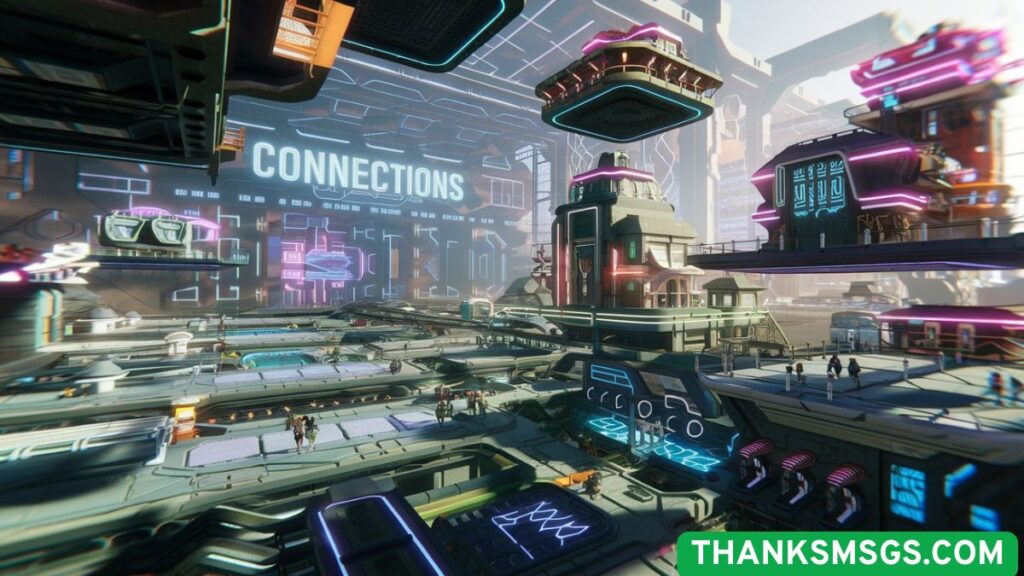Cznull is a digital project that mixes art and code. It uses WebGL and shaders to make moving visuals. These effects run in a web browser. People can view or use them in websites and apps.
Have you ever seen a screen that looks alive? Cznull creates those kinds of effects. It grabs your eyes and keeps you watching. It’s simple, but feels magical.
Cznull started on GitHub and became popular online. Many people share its visuals on TikTok and Reddit. Developers love it for learning and fun. It is open-source and free to use.
Understanding Cznull: Origins, Significance, and Impact
In the vast expanse of the digital world, certain names and entities emerge, capturing the attention and curiosity of tech enthusiasts, developers, and the broader online community. One such entity is Cznull. From its intriguing presence on GitHub to its viral moments on social media, Cznull has become a topic of discussion and exploration. But what exactly is Cznull? How did it gain prominence, and what does it signify in the ever-evolving tech landscape? Let’s delve into the origins, significance, and impact of Cznull.
The Rise of Cznull in Digital Culture
Cznull’s journey into digital culture is marked by its unique blend of creativity and technical prowess. Originating from the GitHub repository cznull.github.io, Cznull began as a platform showcasing various projects and experiments. Over time, it gained traction through its visually captivating content, particularly the mesmerizing shader-based visuals that became a hallmark of its identity. These visuals, often shared on platforms like TikTok and Reddit, caught the eye of tech enthusiasts and casual users alike, propelling Cznull into the digital spotlight.
The allure of Cznull lies in its ability to combine artistic expression with technical experimentation. The vibrant, kaleidoscopic patterns generated by its shaders not only demonstrate advanced programming techniques but also evoke a sense of wonder and curiosity among viewers. This fusion of art and technology has solidified Cznull’s place in digital culture, making it a symbol of innovation and creativity in the tech community.
Cznull: A Deep Dive into Its Significance
At its core, Cznull represents the intersection of open-source development and digital art. The projects hosted on cznull.github.io serve as both functional tools and artistic expressions, reflecting the creator’s vision and expertise. These projects often explore complex concepts in computer graphics, data visualization, and interactive design, pushing the boundaries of what is possible in web development.
The significance of Cznull extends beyond its technical achievements. It embodies the spirit of open-source collaboration, where knowledge is shared freely, and innovation thrives through community engagement. By making its projects accessible to all, Cznull encourages others to explore, learn, and contribute, fostering a culture of collective growth and discovery in the digital realm.
How Cznull Shapes Modern Technology Trends

Cznull’s influence on modern technology trends is evident in several areas:
- Web-Based Graphics: The use of shaders and real-time rendering techniques pioneered by Cznull has inspired a new wave of web-based graphics, enabling developers to create immersive visual experiences directly in the browser.
- Open-Source Movement: Cznull’s commitment to open-source development has reinforced the importance of transparency and collaboration in the tech industry, encouraging others to share their work and contribute to the community.
- Cross-Platform Compatibility: By ensuring its projects are compatible across various devices and platforms, Cznull has highlighted the importance of accessibility and inclusivity in modern software development.
Through these contributions, Cznull has played a pivotal role in shaping the direction of contemporary technology, influencing both current practices and future innovations.
Exploring the Mysteries Behind Cznull
Despite its growing popularity, much about Cznull remains shrouded in mystery. The identity of its creator(s) is largely anonymous, and little is known about their background or motivations. This enigmatic presence adds to the intrigue surrounding Cznull, prompting discussions and speculations within the tech community.
The allure of the unknown has sparked a wave of interest, with many attempting to uncover the person or group behind Cznull. However, the lack of concrete information only deepens the mystery, making Cznull an enigmatic figure in the digital world.
Cznull and Its Impact on Cybersecurity
While Cznull is primarily known for its artistic and developmental endeavors, its influence extends into the realm of cybersecurity. The complexity and sophistication of the shaders and projects showcased on cznull.github.io serve as a testament to advanced programming techniques, which can inspire and inform cybersecurity professionals. Understanding these techniques can aid in developing more secure systems and applications, as they highlight potential vulnerabilities and areas for improvement.
Moreover, the open-source nature of Cznull’s projects allows cybersecurity experts to examine and learn from the code, fostering a collaborative approach to enhancing digital security.
Why Cznull Is Trending Among Tech Enthusiasts
Cznull’s rise to prominence among tech enthusiasts can be attributed to several factors:
- Innovative Content: The unique blend of art and technology in Cznull’s projects captivates viewers, offering something different from conventional tech content.
- Community Engagement: Active participation in platforms like GitHub and social media fosters a sense of community and belonging among followers.
- Educational Value: The projects serve as learning resources, providing insights into advanced programming and design techniques.
These elements combine to make Cznull a trending topic among tech enthusiasts, sparking discussions and collaborations across various platforms.
Cznull in Programming: What Developers Should Know
For developers interested in exploring Cznull’s projects, it’s essential to understand the underlying technologies and concepts:
- Shaders: Cznull’s projects often utilize shaders to create complex visual effects, requiring knowledge of graphics programming and rendering techniques.
- Web Development: Proficiency in HTML, CSS, and JavaScript is necessary to navigate and modify the projects hosted on cznull.github.io.
- Open-Source Collaboration: Familiarity with GitHub’s version control system and collaboration tools is crucial for contributing to Cznull’s projects.
By understanding these aspects, developers can effectively engage with Cznull’s work, gaining valuable experience and contributing to the broader tech community.
The Future of Cznull: Predictions and Possibilities
Looking ahead, the future of Cznull appears promising. Potential developments include:
- Expansion of Projects: Introduction of new projects exploring different aspects of technology and art.
- Increased Collaboration: Partnerships with other developers and organizations to enhance and diversify the projects.
- Educational Initiatives: Creation of tutorials and resources to help others learn from Cznull’s work and apply similar techniques.
- Community Building: Establishment of forums and platforms for users to share their experiences and collaborate on projects.
These developments could further cement Cznull’s position as a significant figure in the digital world, influencing future trends and innovations
Cznull Explained: A Beginner’s Guide
For those new to Cznull, understanding its offerings can be both exciting and overwhelming. Here’s a simplified guide to get started:
- Visit the Website: Navigate to cznull.github.io to explore the various projects and experiments.
- Understand the Basics: Familiarize yourself with the concepts of shaders and web-based graphics to appreciate the technical aspects.
- Experiment: Interact with the projects to see how they respond to different inputs and settings.
- Learn and Apply: Use the projects as learning tools to enhance your understanding of web development and graphics programming.
- Engage with the Community: Join discussions and forums to share your experiences and learn from others.
How to Use Cznull in Your Projects
- Clone Cznull’s GitHub repo to explore the live demo and source code.
- Use it as a background visual for creative web projects or portfolios.
- Integrate it with HTML5 canvases for real-time interactive effects.
- Replace static hero sections on websites with Cznull animations.
- Adapt Cznull’s shader system to create unique loading animations.
- Customize its parameters to create unique theme variations.
- Use Cznull for ambient visual loops in exhibitions or events.
- Implement in dashboards for data-driven background displays.
- Combine it with music visualizers for dynamic audio-reactive content.
- Pair it with JavaScript libraries like Three.js for added 3D effects.
- Embed Cznull effects into mobile apps using WebView.
- Create responsive versions for screensavers and wallpapers.
- Use it in digital signage for tech startups or futuristic branding.
- Animate user input (like mouse movement) to enhance interactivity.
- Modify Cznull shaders to generate educational visual simulations.
Read Also: TopHillSport. com: Elevate Your Game, Reach New Heights
Cznull vs. Traditional Concepts: A Comparative Analysis

- Traditional code aims for clarity; Cznull emphasizes experience.
- Most software is functional—Cznull is expressive and artistic.
- Traditional UIs are static; Cznull creates living, fluid visuals.
- Legacy concepts use data to inform; Cznull uses it to transform.
- Old tools follow strict frameworks; Cznull thrives in improvisation.
- Cznull breaks the mold of “what software should look like.”
- Traditional workflows are goal-driven; Cznull celebrates exploration.
- Most tools optimize for output; Cznull prioritizes aesthetics.
- Function often trumps form; Cznull balances both masterfully.
- Classic systems prioritize backend logic; Cznull champions the frontend experience.
- Traditional apps require user input; Cznull reacts to presence itself.
- Unlike typical charts or interfaces, Cznull evolves visually.
- Most dev tools are reactive; Cznull is proactive and ambient.
- Legacy apps fade in the background; Cznull draws focus.
- In contrast to structured logic trees, Cznull thrives in abstraction.
The Role of Cznull in Data Science
- Use Cznull to turn raw data into living visualizations.
- Encode data streams into evolving shader effects.
- Let data anomalies become real-time distortions or pulses.
- Highlight peak patterns using motion and brightness in visuals.
- Build live dashboards that reflect streaming data behavior.
- Translate numerical data into abstract animation sequences.
- Explore multi-dimensional datasets through color-mapped shaders.
- Use Cznull to animate changes in regression or classification models.
- Transform time series data into rhythmic loops or pulses.
- Develop tools that visualize AI model accuracy over time.
- Integrate Cznull into Jupyter notebooks for live previews.
- Combine data clusters with organic motion using Cznull shaders.
- Reveal hidden data structures through generative motion patterns.
- Use it to make machine learning explainability more intuitive.
- Bring a narrative layer to your data storytelling using Cznull effects.
Cznull: Challenges and Opportunities

Challenges:
- Cznull has a steep learning curve for shader novices.
- Browser and GPU compatibility can vary across users.
- Documentation is limited—requires hands-on experimentation.
- Optimization is crucial; high-performance devices are preferred.
- Not inherently mobile-friendly—requires careful adaptation.
- Debugging shaders is complex for most developers.
- Hard to integrate with backend-heavy environments.
- Can be seen as visually overwhelming in business apps.
Opportunities:
- Teach advanced graphics programming in engaging ways.
- Position Cznull as a showcase for real-time generative design.
- Create online communities focused on shader art using Cznull.
- Offer design services based on customized Cznull visual packages.
- Develop plug-ins for platforms like Figma or VS Code.
- Use in immersive learning platforms or digital museums.
- License visual packs for use in media or entertainment.
Unlocking the Potential of Cznull in AI Development
- Train AI models to generate novel Cznull-like shader variations.
- Use Cznull as a visual layer for AI-driven creative tools.
- Animate neural network decision paths in real time.
- Integrate with reinforcement learning agents for visual feedback.
- Create art bots that evolve Cznull visuals over time.
- Generate shader code from natural language using LLMs.
- Visualize model convergence using color, motion, and form.
- Build AI that recognizes music tones and adjusts visuals accordingly.
- Develop AI interfaces where users see model uncertainty visually.
- Train GANs to replicate Cznull patterns in new contexts.
- Use Cznull visuals as a dataset for image recognition tasks.
- Let AI customize parameters based on user mood or interaction.
- Translate AI-predicted data into compelling animated stories.
- Employ style transfer to blend real photos with Cznull visuals.
- Explore real-time AI performance with dynamic Cznull overlays.
Conclusion
Cznull stands at the fascinating intersection of technology, creativity, and open-source exploration. What began as a mysterious online presence has evolved into a symbol of generative art, experimental coding, and forward-thinking innovation. Whether you’re a developer seeking inspiration, a designer craving immersive visuals, or a tech enthusiast intrigued by the future of interactive systems—Cznull offers a universe of possibilities.
Its rise reflects a shift in how we perceive software—not just as tools or utilities, but as mediums of expression and emotion. Cznull invites us to explore the space where data becomes art, code becomes canvas, and digital experiences become alive.



